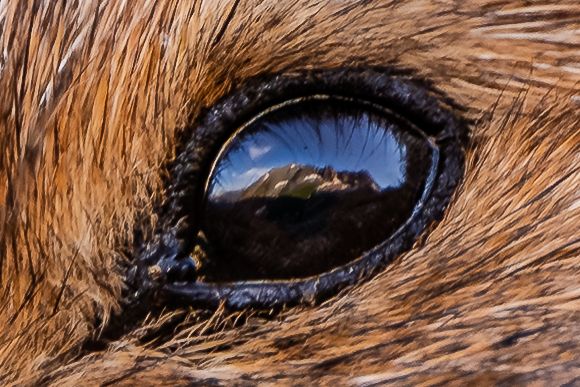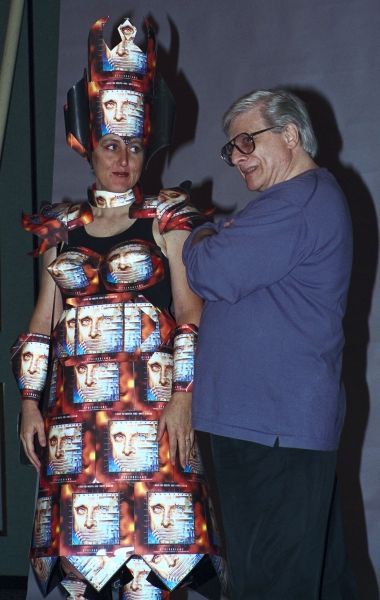#CRABZ
28.10.2025 21:03 — 👍 12 🔁 1 💬 0 📌 0Oscillators of Leng
@hobboth.bsky.social
@hobboth.bsky.social
#CRABZ
28.10.2025 21:03 — 👍 12 🔁 1 💬 0 📌 0С днем рождения! Няяя!
23.10.2025 08:41 — 👍 0 🔁 0 💬 0 📌 0А, ну тогда я спокойно могу не считать тебя одержимым роботом! Для 2 актов норм и по моим меркам круто. Я с 80+ часов в 3 акте сейчас шарюсь в своем первом и надеюсь единственном прохождении)
02.10.2025 22:44 — 👍 0 🔁 0 💬 0 📌 0Это 2 акта или 3?
02.10.2025 06:35 — 👍 0 🔁 0 💬 1 📌 0the Command & Conquer series is 30 years old today we so have an excuse to share this iconic moment with Tim Curry
26.09.2025 17:05 — 👍 5686 🔁 2795 💬 54 📌 180Приближаюсь к третьему акту силксонга. Очень приятная игра, нравица. Правда, в основном, когда не надо прыгать или драться, разработчики кормят стеклом.
25.09.2025 20:14 — 👍 3 🔁 0 💬 0 📌 0
Red Haeckel Cluster 3/2020 9 X 9 inches [22.9 X 22.9 cm] Colored Pencil on Paper #sciart #gawoski #plankton
23.09.2025 16:32 — 👍 114 🔁 14 💬 3 📌 0Проще мимо пройти.
А у сплинтера как только до меня дошло, что можно шелковым копьём убивать самонов - босс сразу легко прошелся. Я с wanderer crest бегаю, атачки быстрые, шелк набивается быстро, лоза пилится быстро.

Historical illustration from "British mammals" (1920-21) depicting two detailed whales identified as Common Rorqual or Blue Whales. The whales are shown in side view, highlighting elongated bodies with characteristic pleated grooves along their undersides. One whale is positioned upright with its head tilted upward, while the other curves slightly, showing the dorsal fin and fluke clearly. The illustration captures the whales' sleek forms and textured skin, emphasizing their size and distinctive features typical of the species. The background is softly shaded to suggest an underwater environment.
🐳 British mammals /.
London, ;Longmans, Green, 1920-21..
[Source]


Found another stick covered in Favolaschia claudopus - Orange Porecap in a different, more local woodland. A rare Madagascan import. I was very excited to find it. 🍄📷 #FungiFriends
09.09.2025 11:21 — 👍 110 🔁 17 💬 2 📌 1They didn't even have a name for the guy who invented the sandwich. They were just like, well he's from sandwich, lets call him that. Thats how revolutionary the concept was, there were no words to even describe the man who came up with it
09.09.2025 11:55 — 👍 58 🔁 2 💬 3 📌 0Amazing that before sandwiches were invented there weren't enough things between other things to bother making up a word for it
09.09.2025 11:49 — 👍 113 🔁 5 💬 2 📌 0
the hunter's march experience #Silksong
07.09.2025 12:07 — 👍 553 🔁 124 💬 3 📌 5
Watercolor and pencil botanical sketch of a Gaylussacia baccata (Black Huckleberry) branch. The illustration features a slender brown stem with elongated, outlined leaves, some partially shaded in green. Small clusters of bright red, bell-shaped berries hang from short green stems. Handwritten notes identify the plant and date it June 9, 1897, in Taunton. The artwork blends fine pencil lines with delicate watercolor to highlight the plant’s fruit, linking it to the theme of "water" through its natural habitat near moist, forested areas in North America. The sketch emphasizes botanical detail and natural coloration.
💦 [Water-color sketches of plants of North America and Europe]
[Source]

A pika sits on a mossy rock.

Tighter crop of the same pika, focusing on its head.

An even tighter crop, focusing more on the pika's eye.

An extremely tight crop of the pika's eye, emphasizing their reflection of an early morning mountain scene.
"Pat, why do you carry that ridiculous 600mm lens on long hikes?"
Buddy, I can see mountains reflected in the eyes of a trailside pika.
This is some of the hardest shit I've seen in my life
28.08.2025 06:42 — 👍 4235 🔁 1176 💬 77 📌 199
A scene of destruction; a city's downtown lays in smouldering ruin, skyscrapers crumbling, fires creating toxic smoke. A colossal mechanical robin stands in the middle of this mayhem. The machine leans forward with a hydraulic "VVVVRT" and exhaust shoots out of its neck with a "PSSHHT!". In the interior of this horrible mechanism we see a robin in the command centre, pausing and looking away from its module. Two more robins wait in pregnant pause, all wearing headsets. There is a poster hung that reads "WORK SAFELY" and features a bird wearing a hardhat. Another begins "you don't have to be CRAZY to work here but..." and is cut off by the frame of the image. We see the captain of the vessel, in a captain's hat, pause before commanding "Full power to thrusters". In the final panel, the mecharobin is blasting forward with immense jet engines that have emerged out of each side of the machine. Entire buildings are blown apart in its wake. The target of this war machine is a giant earth worm which is laying waste to the city in the foreground. It seems surprised at this maneuver of the robins.
27.08.2025 15:10 — 👍 2976 🔁 821 💬 24 📌 12
Historical illustration titled "Abalones" from 1897, depicting detailed marine life including two large abalone shells, one intact with a living animal and one empty. Surrounding them are various sea anemones and coral-like organisms labeled with scientific names such as Cerianthus membranicus, Haliotis tuberculata, Actinia equina, and others. The vibrant ocean floor scene includes spiky and flowery textures, showcasing diverse underwater species in natural colors of brown, orange, and green. The image emphasizes the abalone shells with close-up views, capturing their spiral and textured surfaces.
🌼 The hall of shells;.
New York, D. Appleton and company, 1897..
[Source]
Даааа! ХЗ насколько меня хватит в это играть, но анонс было очень интересно смотреть, круто сделали.
21.08.2025 11:10 — 👍 0 🔁 0 💬 0 📌 0
This is a picture of Harlan Ellison next to a woman in a dress made of unsold mousepads from the I Have No Mouth And I Must Scream point and click adventure game
16.08.2025 07:38 — 👍 2620 🔁 922 💬 26 📌 55
Illustration from an 1880 natural history book depicting two monotremes: a porcupine ant-eater with dense, spiky fur and a long snout, appearing to forage, and a duck mole, or platypus, shown on the riverbank with a broad, flat bill, webbed feet, and a sleek, dark body. The setting features water, grasses, and leafy plants, highlighting their natural habitat. The detailed, colored engraving emphasizes distinctive features of these unusual egg-laying mammals native to Australia. Text below identifies the animals and plate number.
😸 Johnson's household book of nature, .
New York, H.J.Johnson, [1880].
[Source]

лучшая шутка в контексте сегодняшнего анонса распада мегадэт
thehardtimes.net/music/dave-m...

А мы с комарами недавно в лесу записывали всякую музычку!
www.youtube.com/watch?v=MVgU...

Historical scientific illustration titled "Les Mollusques" (1836-1845), depicting the Pyrosoma giganteum, a large colonial marine organism classified among mollusks. The central image shows the elongated, cylindrical, translucent body covered with numerous small, finger-like projections. Surrounding detailed drawings display various anatomical sections and internal structures, including muscle and organ arrangements, labeled with letters and numbers for identification. The illustration is rendered in fine lines and soft blue-gray tones on a beige background, emphasizing the intricate morphology of this gelatinous sea creature. No seals are depicted, despite the keyword provided.
🦭 Les mollusques
Paris: Fortin, Masson et cie ., [1836-1845]
[Source]


Внезапно ворвусь с парой ночных фото января 2023. Намибия.
11.08.2025 22:06 — 👍 6 🔁 0 💬 0 📌 0О, я тоже недавно сломал нож о сыр!
09.08.2025 20:07 — 👍 1 🔁 0 💬 0 📌 0традиционно напоминаю что любая пропаганда — говно говна
даже если вы искренне верите что это "хорошая пропаганда которая борется против плохой пропаганды"
(это я увидел в ленте репост инсайдера и у меня сгорела жопа)

Captain Haddock looking very frazzled, saying, “What a week, huh?” Tintin leans into the frame and says, “Captain, it’s Wednesday.” Snowy is very excited about the drink he has found.
23.07.2025 10:34 — 👍 346 🔁 187 💬 1 📌 6